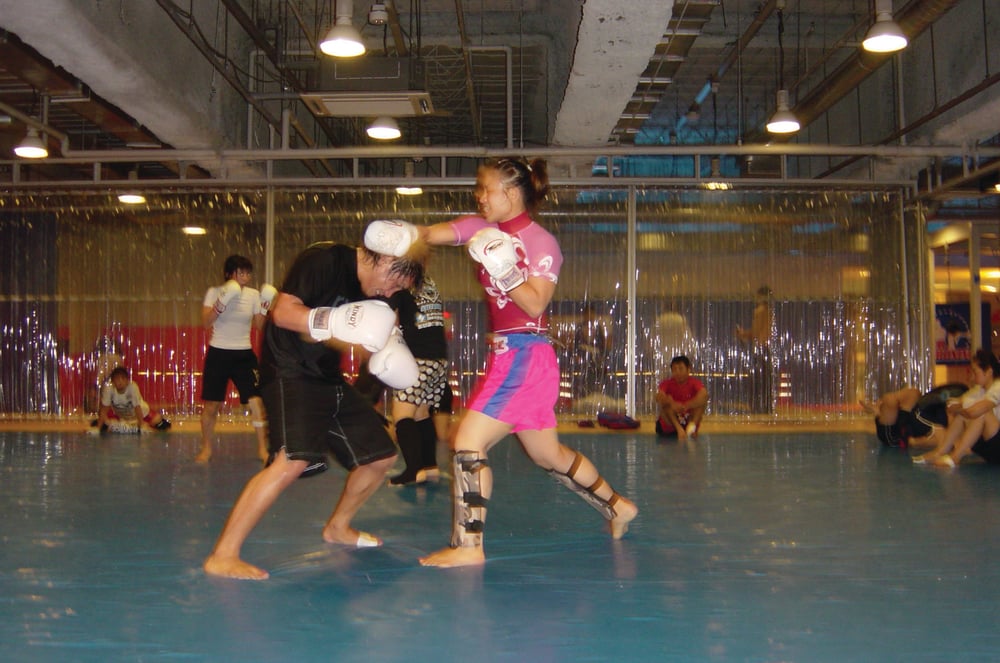
Issue 038
June 2008
My first experience of a mixed martial arts (MMA) club was in July 2000. I’d just watched a documentary on TV about MMA, and as soon as I saw it, I knew it was something I wanted to do. I’d been involved in various martial arts for about 10 years at that point, but I wanted something that none of those had been able to give me. I wanted to know if I could fight.
When I first started training, it seemed that women didn’t do MMA. In fact, I didn’t see women compete until 2002 when I watched the DVD of Hook ’n Shoot, Revolution, an all-female card put together by female MMA advocate Jeff Osborne. For many people that event heralded the coming of women to the sport. And with that, it drew attention.
It all goes back further than 2002. In Japan, where MMA events are more mainstream and women’s participation in the martial arts more widely established, the story is a little different. Smackgirl, the most prolific all-women’s organisation in the world, held its first event in December of 2000, and has been holding regular shows ever since. Although criticized by purists for using ‘modified’ rules (no striking to the head on the ground), it has undoubtedly had a large impact on the growing scene. There are many fighters, both Japanese and Western, who have come up through the Smackgirl ranks, gaining both experience and exposure along the way. Much of this has gone relatively unnoticed in the west, and female MMA is seen by many as a relatively recent phenomenon.
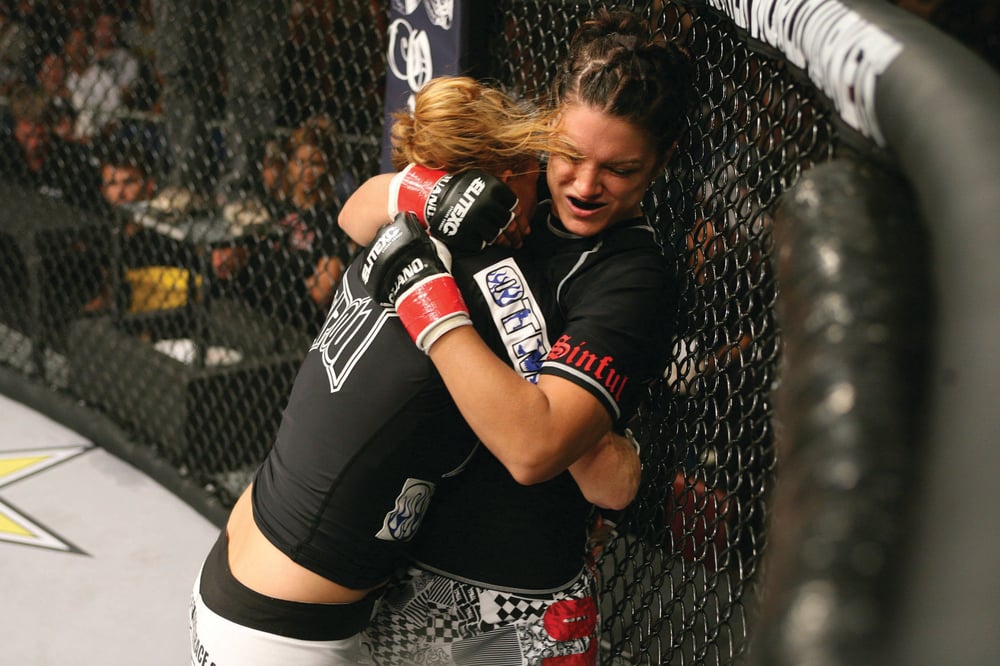
Not everyone is keen on the idea of women competing in MMA. This seems particularly true in the USA. Women are still excluded from the world’s best-known MMA promotion, the Ultimate Fighting Championship (UFC). Top welterweight contender Karo Parisyan commented in an interview, “For me personally, I do not want to see any girl get in the cage and fight. Come on. Can’t they do one thing that guys do and they don’t? Just one? Give me a break. They do weight lifting. They do wrestling. Not MMA, please. It’s too brutal for women.”
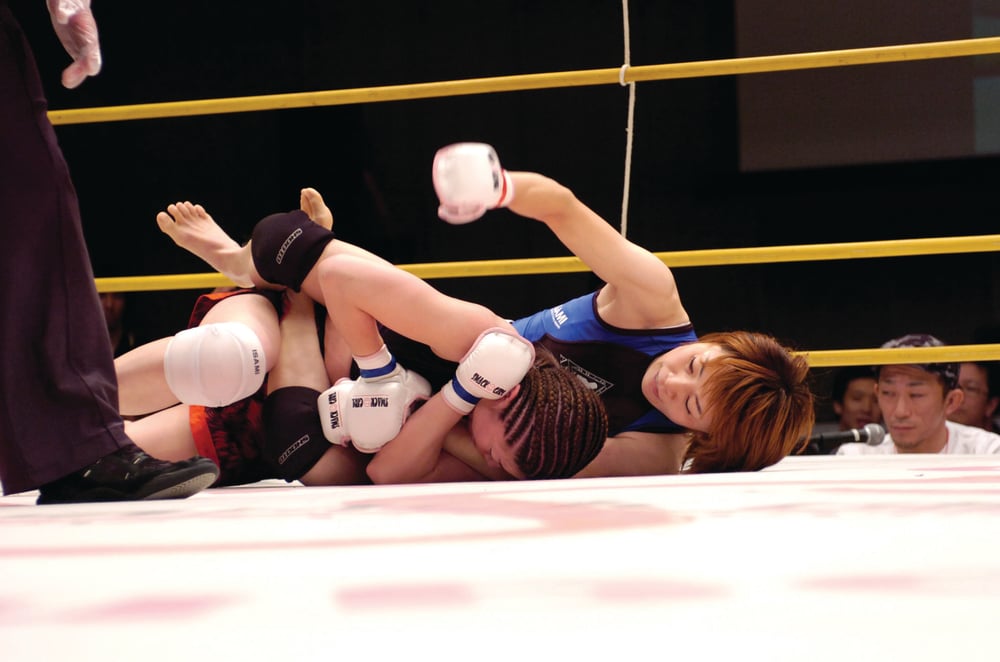
Yet, as the Arabic proverb states, “the dogs may bark, but the caravan moves on”.
Gradually, inevitably, inexorably, women are making their mark on the MMA scene. Promotions such as EliteXC and BodogFight began investing in the women’s divisions, and the all-female events hosted by Hook ‘n Shoot or Fatal Femmes Fighting are becoming more common.
In Europe and the UK, female fighters seem to find more widespread acceptance among the MMA community, at least in principle. Promoters are generally keen to put women’s fights on their cards, and are frequently prevented only by a lack of suitable fighters. Cage Rage recently held their first female fight on a major card at Wembley Arena, and in doing so became the biggest UK-based promotion to embrace women’s MMA. Aisling Daly, who won that fight, is part of a new generation of female MMA fighters. Young, talented, and relatively new to the sport, she is rising quickly through the ranks.
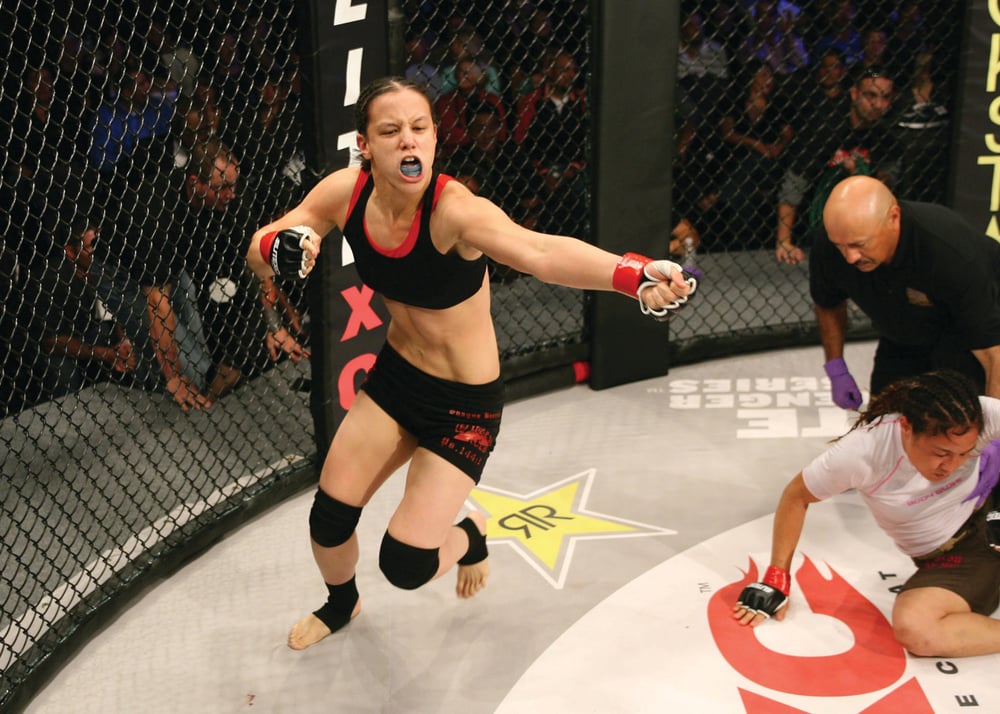
Kaitlin Young is another such fighter, heralded as the future of female MMA after recently winning the Hook ’n Shoot eight-woman tournament. I asked Kaitlin about her experience of getting involved in the sport. “Luckily for us, the pioneers of women’s MMA got their start not long after their male counterparts. I think that this is the key reason why women’s MMA has been regarded by many as one of the most exciting women’s sports out there, and it is also the reason why I have never been denied the opportunity to compete or train due to being female. Had the first female fighters not been
there to pave the way when they did, we would not have the well-developed sport that we have today.”

Josh Barnett is known for being one of the top heavyweight fighters in the world, though few are aware he coaches a team of impressive female fighters, including top names such as Megumi Fujii, Shayna Baszler and Hitomi Akano.
“In my experiences as a trainer I have more often than not found that women fighters are much easier to train than the men,” he said. “Most women come into fighting without any pre-conceived notions of how it should be and whether they are already capable. They come hungry and open, willing to let you as the coach, mould them much more easily than their male counterparts. Surprisingly, what women usually lack in physical prowess, they will work twice as hard when it comes to conditioning and strength training.”
While the lucky few find coaches who are experienced and comfortable working with female athletes, that level of acceptance can’t always be taken for granted. Even now, women often turn up at their local club to find they are the first female to train there. Coaches and training partners may feel uncomfortable, not knowing how to deal with these strange alien beings invading their environment. Shanti Abelha is a Danish Brazilian jiu-jitsu (BJJ) competitor with an impressive list of tournament wins and titles. She explained:
“In my current club, I was the first woman. Every ‘first woman’ in a club, I think, goes through a re-educating of the men phase. Basically, men have to get used to training with us, and generally dropping their egos and training with people smaller than them.”
For the first generation of female MMA fighters, much like Abelha, there was no alternative but to train with men. Most have seen virtue in this necessity, realising that it has forced them to become technically superior, as well as challenging their strength, fitness and physical and mental toughness. Despite the advantages in the long term, training mainly with men can be a frustrating experience, especially for beginners. I remember spending much of my first six months of grappling getting sat on by guys who were bigger, stronger and better than me.
Roxanne Modafferi was catapulted to prominence in the female MMA world when she beat the, until then, invincible Jennifer Howe in 2005. Born in the USA, Modafferi has since moved to Japan. She trains with both men and women, and sees the advantages of each. “Not only is the body type [of women] different, but they tend to go harder, because they can use all their strength and not worry about hurting someone, like the men have to sometimes hold back when fighting a smaller woman.”
In a male-dominated sport, being taken seriously can be a challenge at times. This is a common source of irritation. Christina Fraquelli is a UK-based blue belt in BJJ who won the European championships last year. “Occasionally when I train at a smaller, sister school they have a mixed class... The most crap remark was from a white belt, who, when teamed up with me, said to everyone in the class, ‘Okay, everybody. Don’t laugh at me if I get beat by a girl,’ then proceeded to put my gi over my face and punch me a couple of times, like it was an MMA fight. I was so angry and frustrated, I had to leave the class.”
For the women that go on to compete, there are other frustrations too. Getting fights isn’t always easy, and even at grappling and BJJ tournaments a woman may go to all the trouble of training for, and entering, the competition only to find a lack of serious opposition on the day. The problem is more serious for those few female fighters who are full-time professionals.
In a recent interview, top 135lb contender Amanda Buckner remarked, “Promoters don’t care enough about the women’s divisions, at this point, to take a higher-level girl who wants a fair purse over a girl that is not as good but will fight for almost nothing.”
Given all the difficulties and inevitable setbacks that every female fighter seems to experience, you might start to wonder why it is we do it. So I put this to the women I interviewed; what have you gained from the experience? Has it all been worth it?
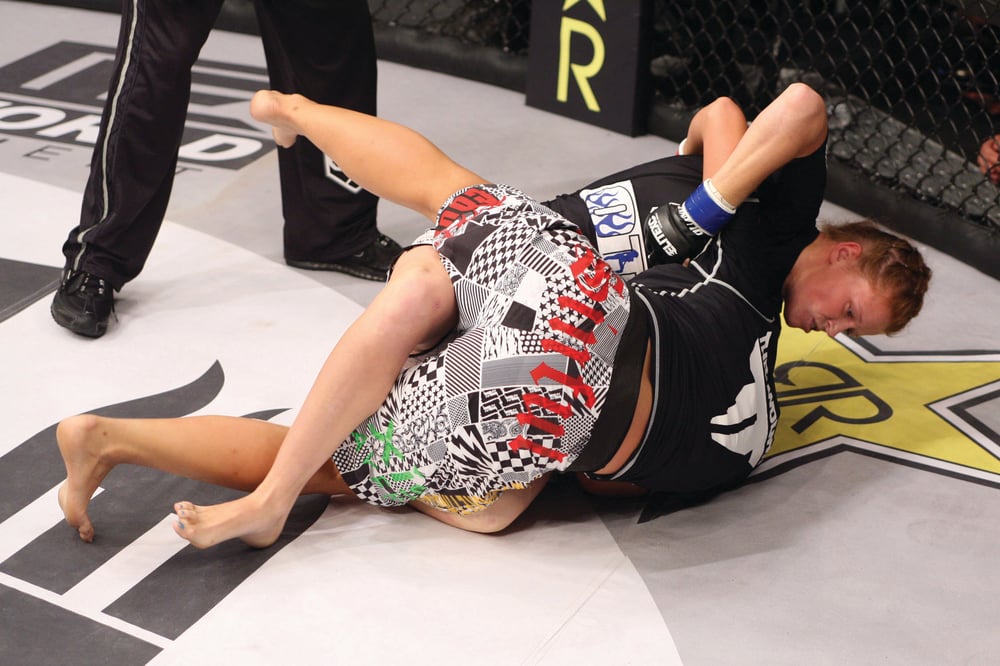
This is where their enthusiasm and love for the sport is unmistakeable. Abelha comments: “There is a special feeling and satisfaction of standing on the podium at a big competition. But just as much, there’s the whole atmosphere and energy around a competition.”
“Also, a lot of my everyday memories are really important. The feeling of being completely and utterly done and drained in every muscle and bone in my body on a Friday evening, after round upon round of hard sparring, covered in sweat – laying down on the mat, half passed-out, just staring at the ceiling with a huge smile on my face – that is what I train for, that is what gets me back to the gym on Monday.”
Modafferi says simply, “I’m in love with MMA. It powers my soul.”
Companionship is another theme that comes up often. UK amateur fighter Serena Remedios explains “The feeling I got from my fight training is a great one, how the team make you feel as you’re not the only one that’s going to be in there fighting, and everyone is behind you with their support and input, it’s the best feeling on the planet.”
For many women, combat sports are more than just another hobby; they’re a way of developing confidence in themselves and their bodies and discovering something about themselves.
Roxy Richardson is a Muay Thai fighter and personal trainer from California. “I never felt like a confident, accepted, popular person growing up. Fighting has taught me that I am capable of much more than I ever expected. I feel I could do anything if I set my mind to it after getting in the ring. I wouldn’t trade my life for any other. I get to play in the gym all day and get paid for it. I love being a teacher and watching other women find confidence in their ability to train and fight. The gains for me as a fighter have been incredible – I am so much more than the shadow of a woman I was six years ago. I wouldn’t change a thing.”
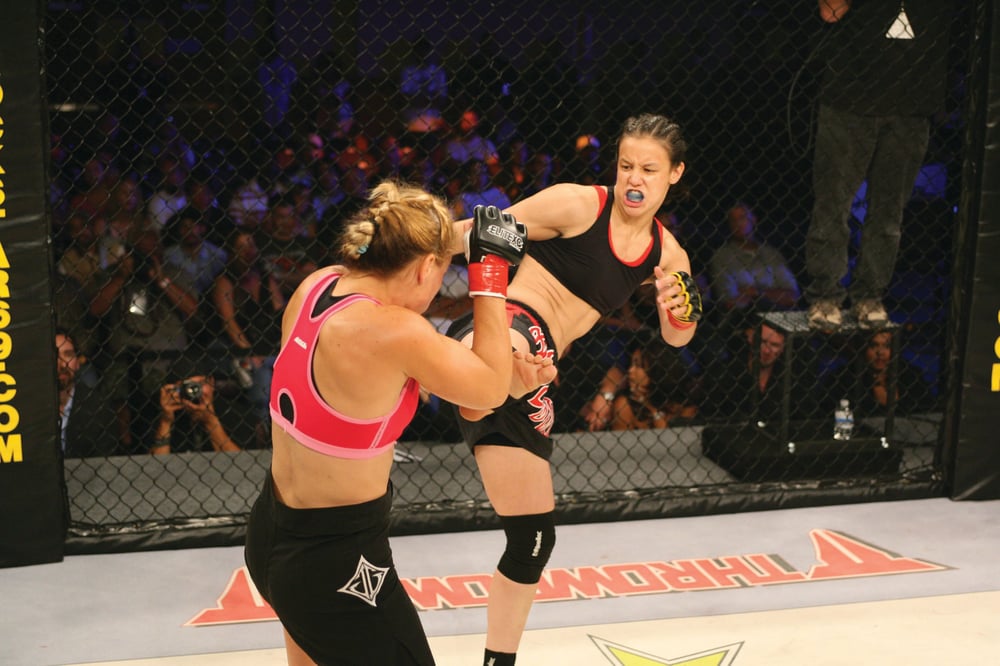
Fraquelli describes how BJJ has affected her “[It’s] made me more confident in myself and my life. I am now taking risks in what I do and I’m not afraid to go beyond my limits in my mind anymore. As a woman, if you can be brave enough to face guys on the mat, then there isn’t anything you have to be afraid of anymore.”
There is no denying the challenges of being a female fighter at a time when the sport as a whole is struggling for acceptance, and women for a place within that sport. Yet it’s also an exciting time, with a wealth of possibilities and opportunities ahead. Josh Barnett is optimistic about the future. “What I came to love about watching these athletes fight – the guts, heart, aggressiveness, and hunger - are all still there. They know their chances to compete are limited and to shine to a bigger spotlight even more so, which is why I believe women fighters are often so tenacious and constantly looking to finish. Some of the greatest fights I have ever seen are from women’s MMA, and often the fight of the night on any given card was from the clash of two female fighters.
“I have seen such great athletes in women’s MMA and some from other sports that could be just around the corner from stepping in the ring,” he continues. “I often cite that the best athlete I may ever coach is Megumi Fujii, who is considered pound-for-pound the best female fighter in the world, and from my perspective, pound-for-pound one of the best regardless of gender.
“I think for the women the horizon is just breaking and I can’t wait to be there to help bring in the next era of athletes as well.”
Female fighters to look out for

TARA LAROSA
Has been involved in female MMA since the very early days. Universally acknowledged to be the top fighter in the 135lb bracket.
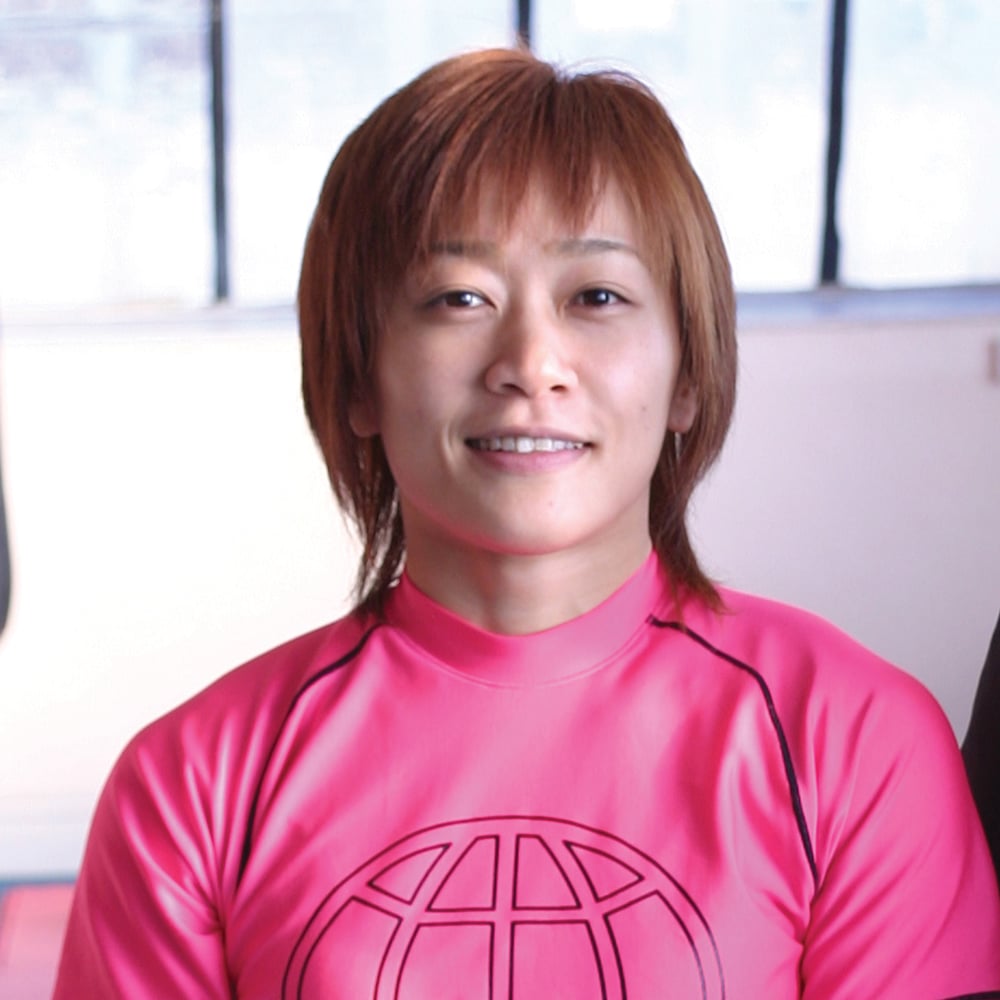
MEGUMI FUJII
Protégé of Hiroyuki Abe and Josh Barnett. A highly skilled grappler, and by popular opinion the top pound-for-pound female fighter.

SHAYNA BASZLER
Another Barnett-trained fighter, she is a highly talented up-and-comer at 135lb.
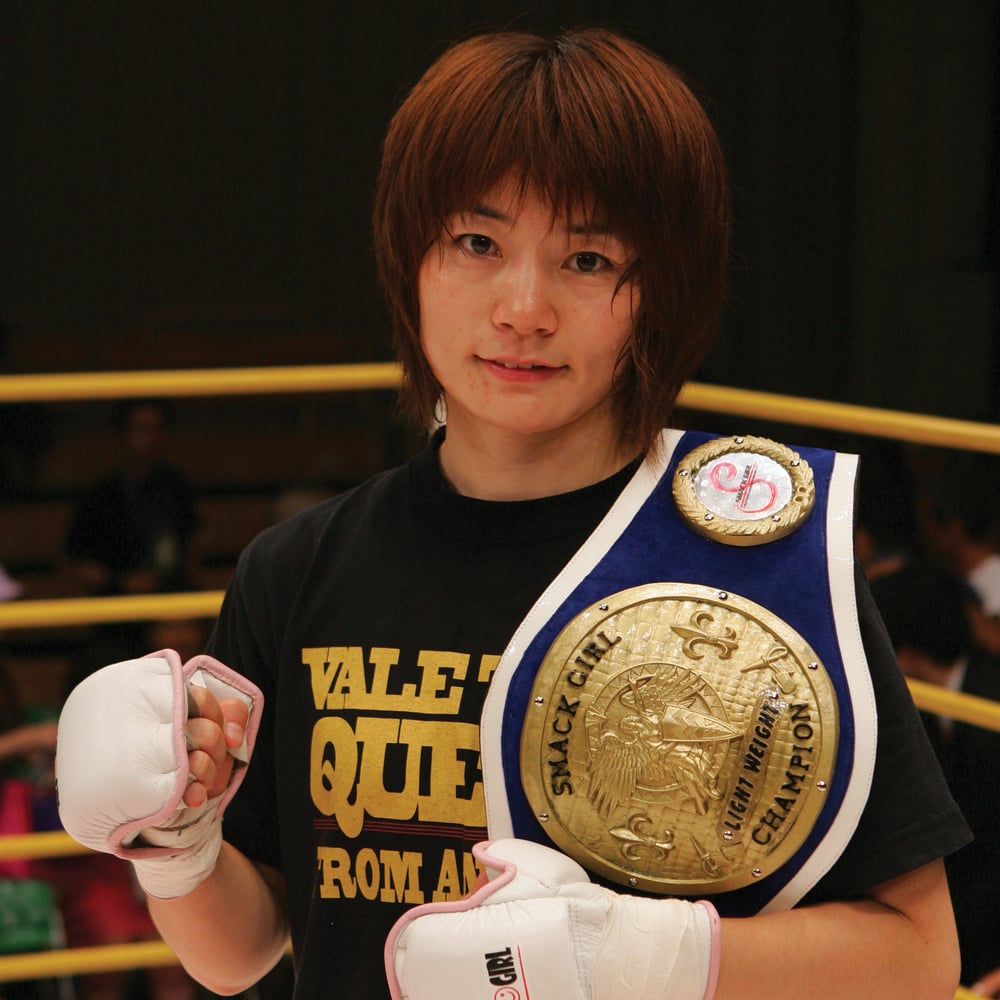
YUKA TSUJI
Very underrated, only has a single defeat on her record, which she has since avenged. A fight with Fujii at 115lb has been speculated but so far seems elusive.
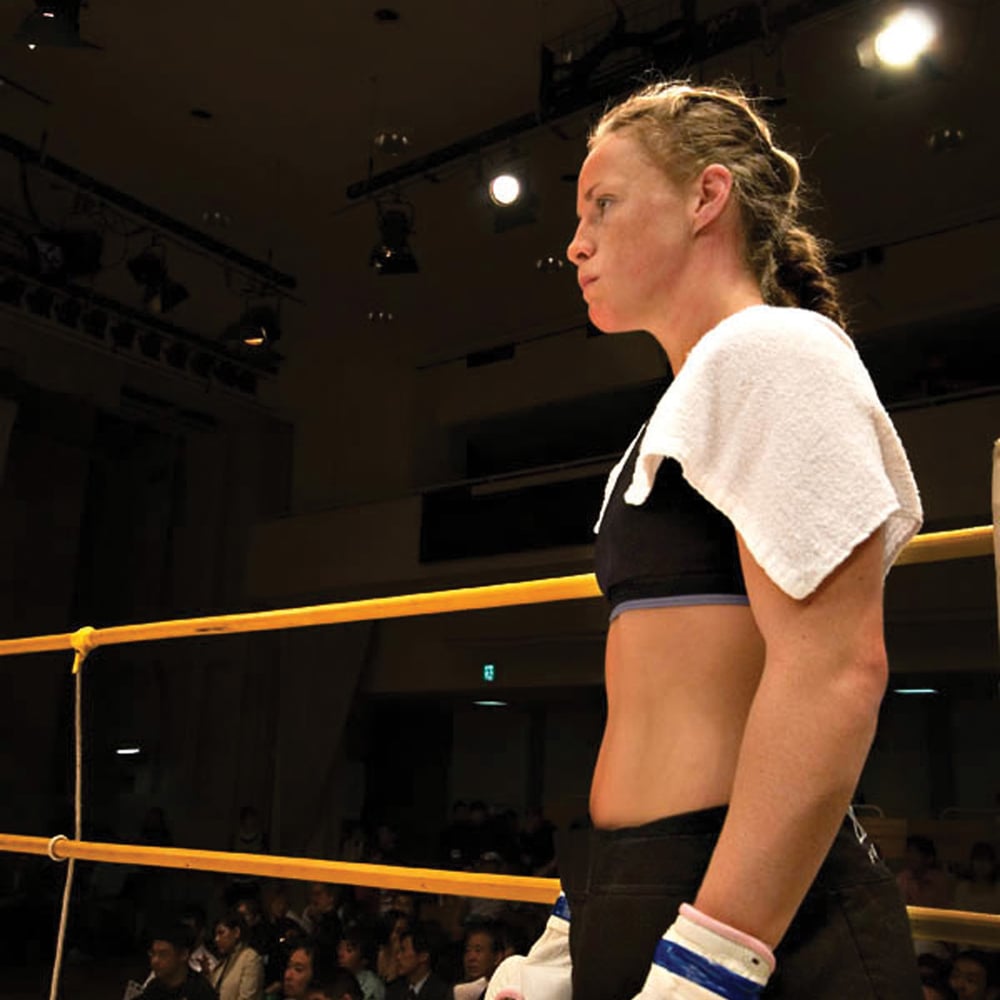
LISA WARD
College wrestler turned MMA fighter, probably the world number one at
105lb.

JULIE KEDZIE
The self-described ‘cheerleader on crack’ trains with world-class coach Greg Jackson in New Mexico.
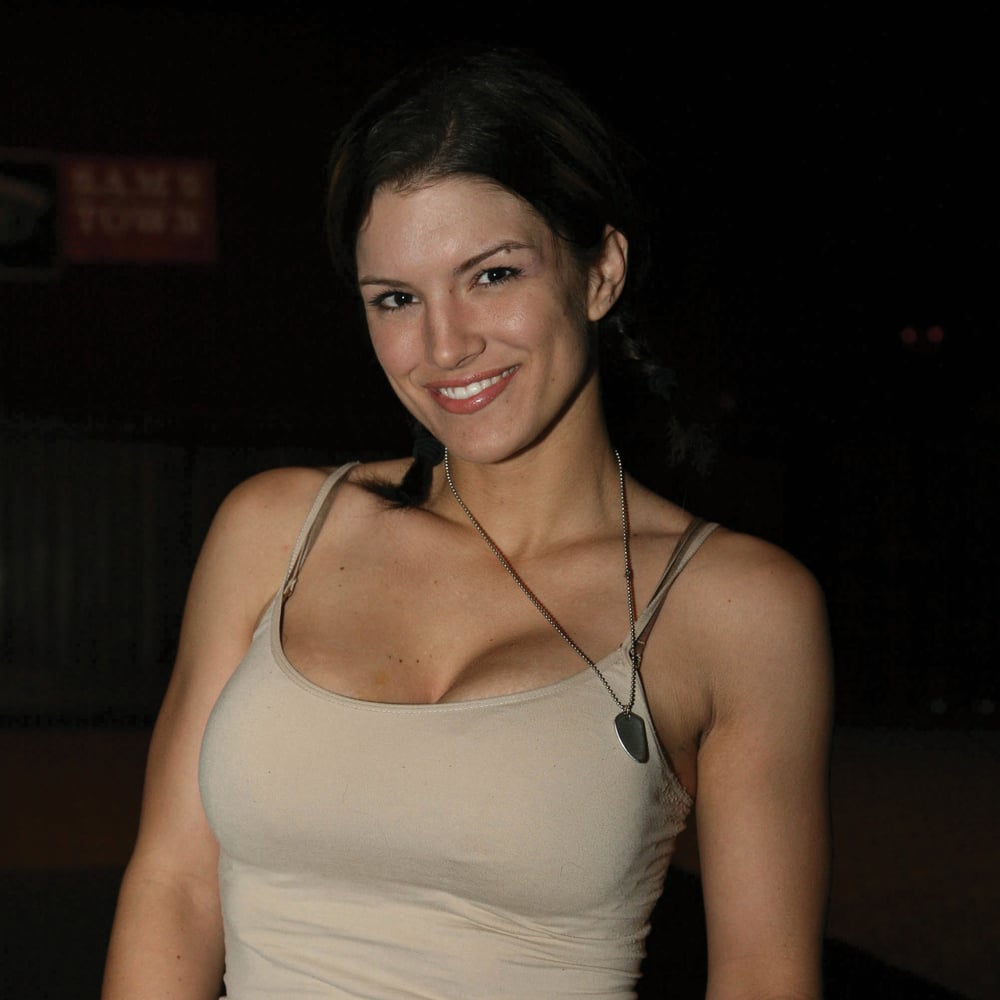
GINA CARANO
The controversial ‘face of female MMA’. Highly promoted by EliteXC, but dogged by weight problems and allegations that she is too protected.
...



